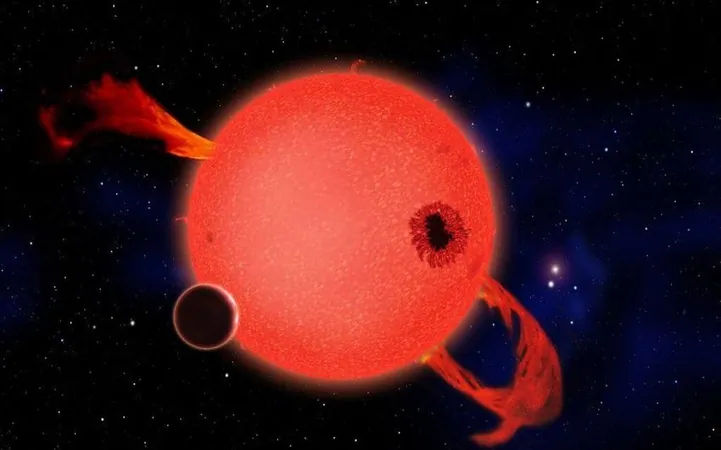
Astounding Discovery: A Planet Literally Disintegrating in Its Star's Embrace!
2025-04-23
Author: Emily
A Cosmic Wonder Unveiled
A groundbreaking revelation has just emerged from astronomers at the Massachusetts Institute of Technology (MIT): they have spotted a planet that is dramatically evaporating as it spirals around its star! This celestial spectacle, known as BD+05 4868 b, is located about 140 light-years away in the constellation Pegasus.
Comet-Like Tail of Dust
What truly sets this exoplanet apart is its colossal tail of mineral dust, stretching an astonishing 9 million kilometers long—a veritable comet made of stone! Roughly the size of Mercury or Earth's Moon, this remarkable planet follows a dangerously close orbit around an orange dwarf star, completing each revolution in just 30.5 hours.
Extreme Heat and Volcanic Lava
At such blistering close proximity, the surface temperature of BD+05 4868 b skyrockets to an incredible 1,600°C (2,912°F)—hot enough to vaporize rock and form rivers of molten lava. It loses an astonishing amount of material with every orbit, shedding mass equivalent to that of Mount Everest—around 350 billion tons! This creates a spectacular dust plume that glimmers as it disintegrates.
Revealing the Secrets of Dark Space
This cosmic revelation was made possible by NASA's TESS (Transiting Exoplanet Survey Satellite), which detected the subtle changes in the star's brightness due to the planet and its expansive dust trail.
A Troubled Past and the Quest for Knowledge
Scientists believe this doomed planet may not have always orbited so perilously close. It was likely pushed inward by the gravitational pull of another massive celestial body—a common occurrence in the chaotic environments of young planetary systems.
A Glimpse Into Planetary Geology
The real thrill for astronomers lies in the potential to study the evaporating material from this planet. With the advanced James Webb Space Telescope, researchers hope to analyze the composition of the dust plume, which might reveal elements from the planet's crust, mantle, or even its core. This unprecedented investigation could offer incredible insights into the geology of rocky exoplanets—without ever leaving our home planet!
Understanding Planetary Life Cycles and Formation
Studying this fiery and dissolving world not only helps us understand how planets meet their fate, but it also illuminates the processes behind the formation, evolution, and sometimes, catastrophic fragmentation of planetary systems.









 Brasil (PT)
Brasil (PT)
 Canada (EN)
Canada (EN)
 Chile (ES)
Chile (ES)
 Česko (CS)
Česko (CS)
 대한민국 (KO)
대한민국 (KO)
 España (ES)
España (ES)
 France (FR)
France (FR)
 Hong Kong (EN)
Hong Kong (EN)
 Italia (IT)
Italia (IT)
 日本 (JA)
日本 (JA)
 Magyarország (HU)
Magyarország (HU)
 Norge (NO)
Norge (NO)
 Polska (PL)
Polska (PL)
 Schweiz (DE)
Schweiz (DE)
 Singapore (EN)
Singapore (EN)
 Sverige (SV)
Sverige (SV)
 Suomi (FI)
Suomi (FI)
 Türkiye (TR)
Türkiye (TR)
 الإمارات العربية المتحدة (AR)
الإمارات العربية المتحدة (AR)